Fly Fishing for
Smallmouth Bass
By Bryan Thrift |
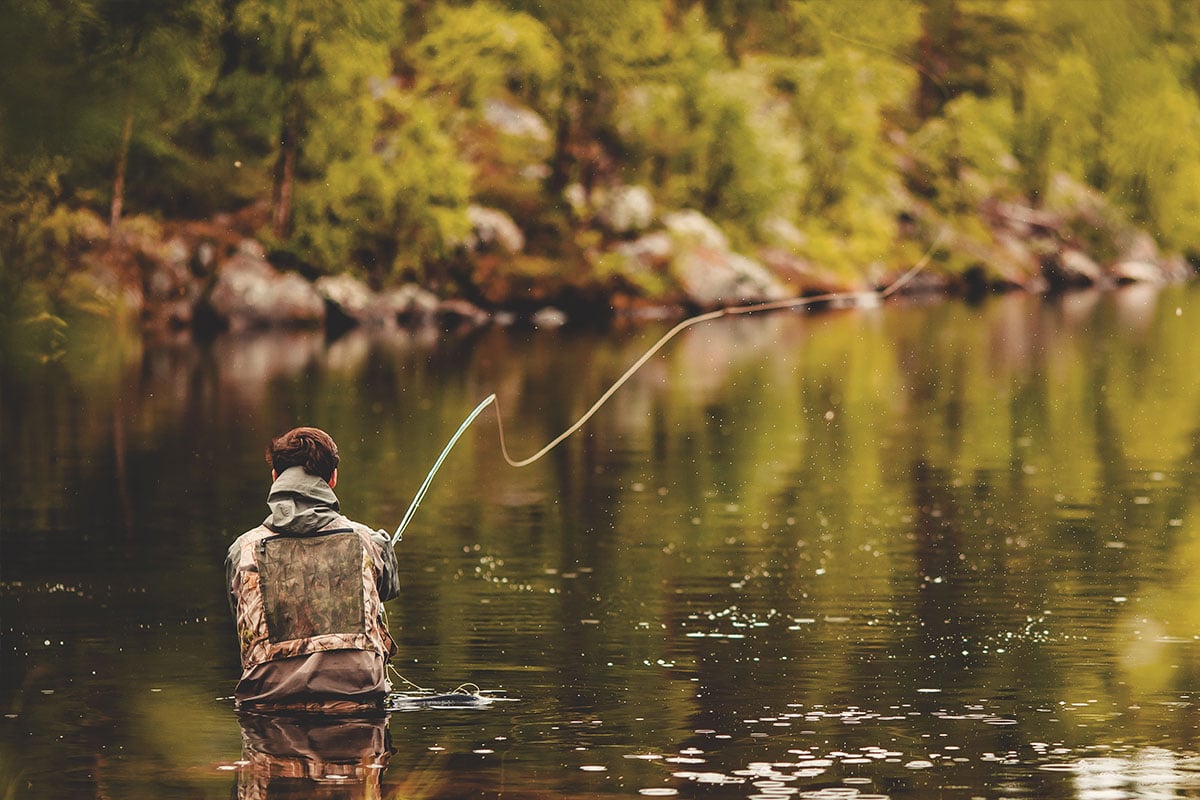
Bass can be found all across North America, and this readiness plus the fun of catching them makes them the most popular recreational fishing species in the United States. Fly fishing for smallmouth bass is relatively straightforward thanks to the wide array of baits and lures available to draw in your prey. Experienced fishers and beginners alike will benefit from the tips and tricks in this guide, which will provide everything you need to know to make your next trip to the lake a success.
Where Should I Fly Fish for Smallmouth Bass?
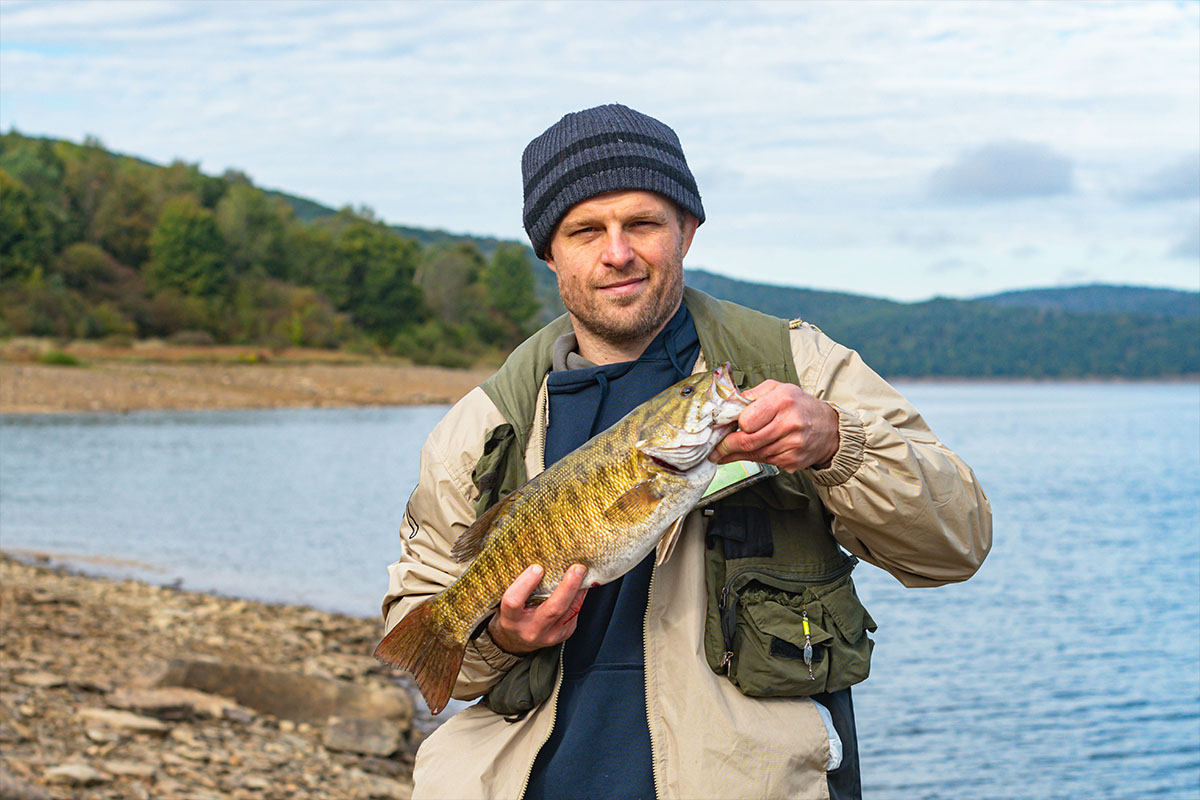
Bass can be found in ponds, lakes, and rivers throughout North America. If you live in North America, chances are you can find a convenient body of water that hosts bass.
Smallmouth and largemouth bass can be found in different parts of moving waters such as rivers and streams. You’ll find smallmouth bass in faster moving water, so head right to the spot where you see the current flowing. You can often find them hiding out around boulders, rocks, rock ledges, fallen trees, logs, and long banks. Bass can often be targeted from the bank or by wading lightly into the stream.
Larger rivers and lakes pose a bit more of a challenge for finding bass, but it’s still fairly straightforward. If you’ll be fishing in these stiller waters, do some research and find out how the lake underneath is structured. Smallmouth bass are attracted to structure such as boulders, tree stumps, bluffs, and ledges, or aquatic vegetation beds that house minnows and other prey. Shoreline vegetation such as reeds and cattails attract smallmouth bass in the shallows, especially when they are home to insects. Boats are typically necessary to fish for bass in large rivers and lakes so you can access these deeper waters.
Lakes can take some trial and error: don’t plan to cover the whole lake at once, which can be overwhelming for just you and your fly fishing rod. Think of each trip as information gathering, and take notes about where you find bass and when. This way, even an unsuccessful outing still contributes to your knowledge of the lake.
When Should I Fly Fish for Smallmouth Bass?
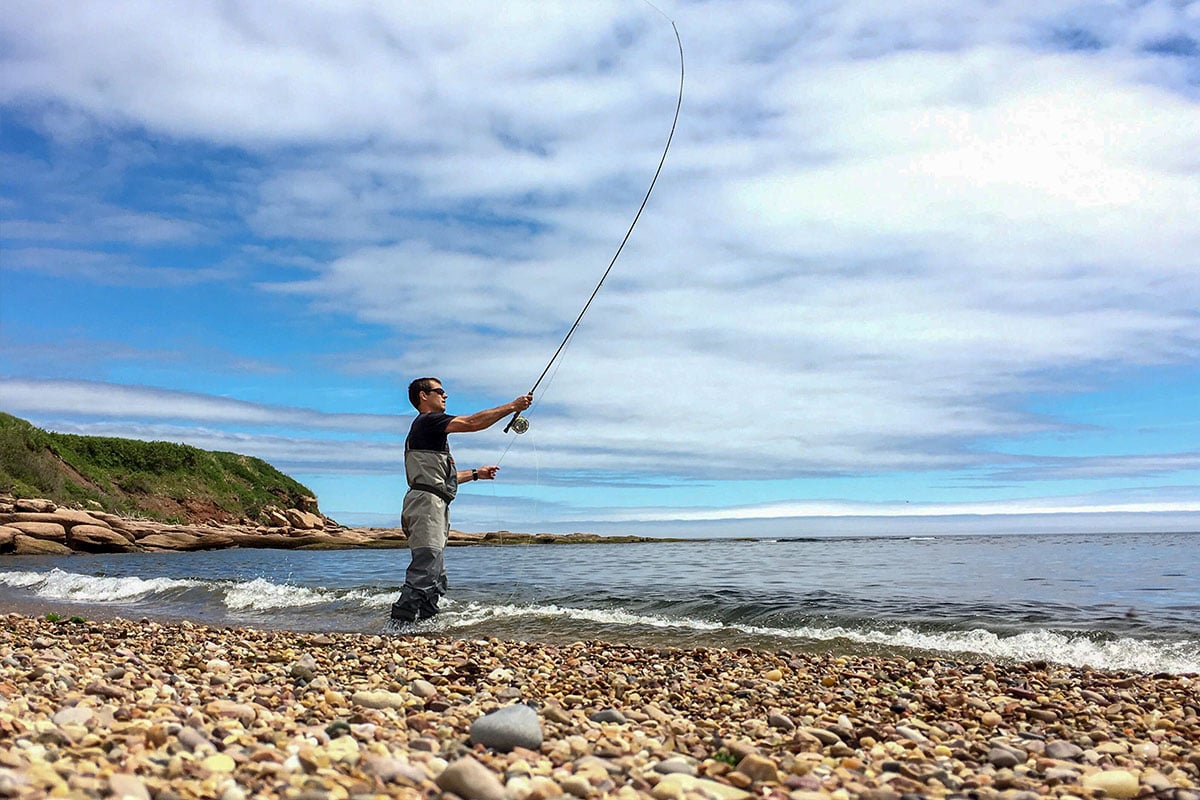
Bass are likely to be in different parts of the river in different seasons. In the winter, smallmouth bass are likely to be found in deeper water. They eat less and become less aggressive in the colder months as they work to preserve energy.
In the spring (or when temperatures get to around 55 degrees), smallmouth bass will head to warmer shorelines. Once you hit 65 degrees, bass will begin spawning in the shallows. After spawning, they will typically stay in these shallower areas, depending on where their primary food source can be found.
In the summer, cooler temperatures in the mornings and evenings are perfect for surface fishing, when smallmouth will be found in the warmer waters of the shallow areas. In the heat of the day, they are more likely to be found in cooler, deeper waters. These deep waters are generally not accessible when you’re fly fishing, though you may be able to reach some deeper bass with sink tips or full-sink lines.
As the temperatures decrease again for fall, the bass return to deeper waters, typically from 20-100’. Winter is generally not a good time for fly fishing small mouth bass, as they are difficult to access and require fast-sinking lines with subsurface flies.
What Should I Use on Smallmouth Bass?

Now that you’ve picked out your spot and scheduled your trip, it’s time to set up your gear.
Best Flies
The best flies imitate the bass’ actual prey. Luckily, bass are very easy to trick, which make them an excellent species for beginning fishers. Smallmouth bass eat crayfish, minnows, and aquatic insects. In a pinch, they’ll also eat darters, suckers, and sculpins along the bottom of the lake; and frogs, mice, land insects, and leeches during the appropriate seasons.
The most appropriate bait depends on the season and where you’re fishing. Poppers and sliders work well when bass are targeting baitfish as they’re schooling, or very active at the surface of the lake.
Flies that imitate dragonflies, mayflies, nymphs, and spinners will bring in smallmouth during hatches, which typically occur at sundown and nighttime.
It’s best to research what the specific bass in your area are targeting. You can do this by comparing notes with other fisherman, or simply looking into the water and seeing what’s down there. If you see there are plentiful frogs in the area that bass seem to attack, a frog fly might be the bet.
Rod & Tackle
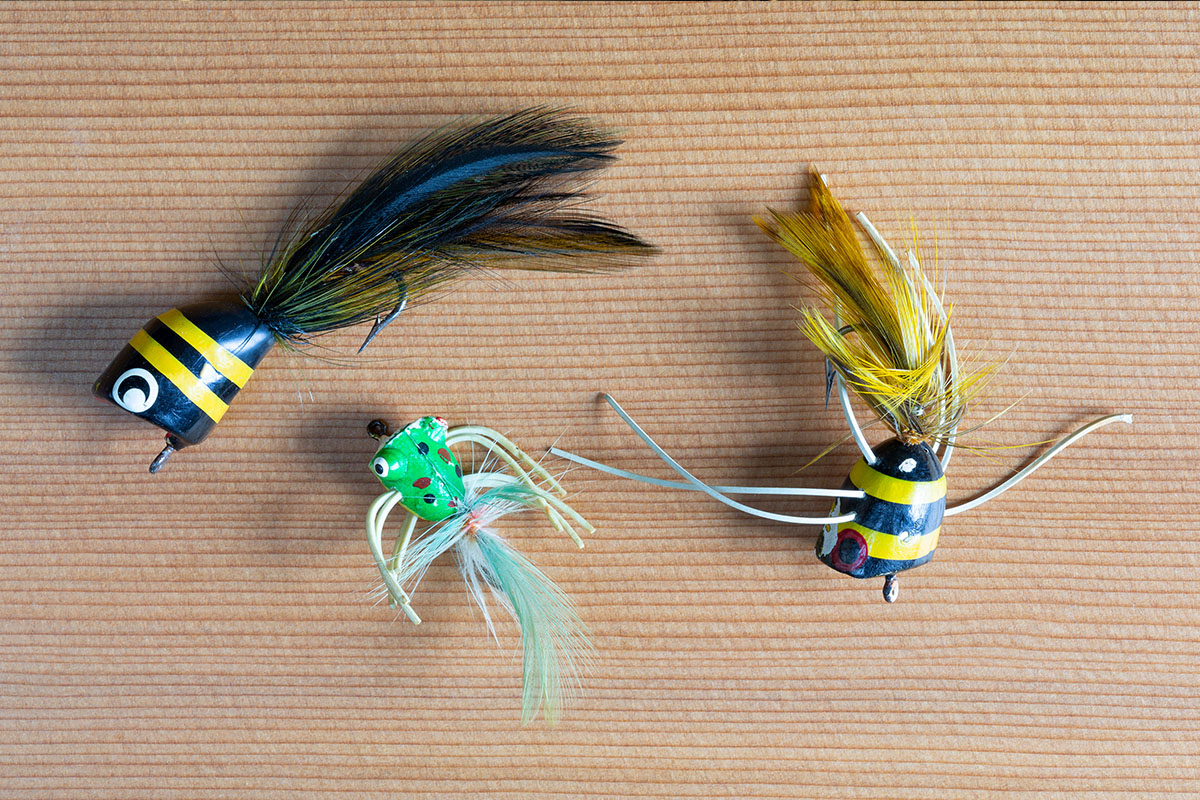
Bass are attracted to larger flies than many other fish, which means an eight weight rod makes for a good all-purpose bass fishing rod if you’ll be targeting smallmouth and largemouth. For just smallmouth, a six or seven weight will work fine thanks to the smaller flies. These heavier weights will also help you deal with the strong winds and long casts that you might encounter in larger lakes.
Bass rarely pull on the line, which means you don’t need a fancy drag system for your reel. You really just need a straightforward weight forward taper, which will store and release your line just fine.
You’ll need different types of tackle depending on how deep you’ll be fishing. For surface flies and shorelines down to 5-6’, you’ll want to use floating bass taper. Slow-sinking, Intermediate Type I line will help you when you need to make longer casts and slower retrieves. Type V weight-forward uniform-sink line will help you in the deeper waters.
How Should I Fly Fish for Smallmouth Bass?
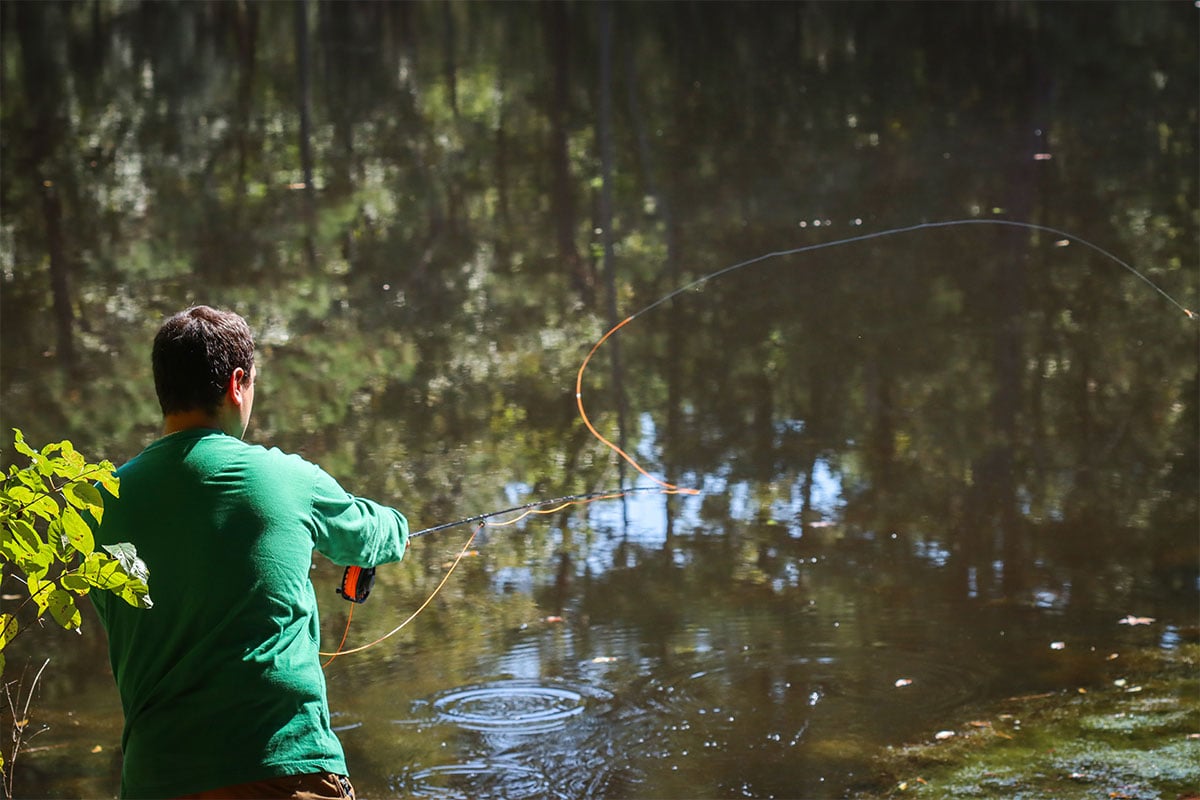
There are many techniques that can help you reel in smallmouth bass. This is an aggressive species, meaning that they are more likely to attack your fly. They have thick skins, which means that you’ll need a strong set on your hook to get it through their mouth properly.
Bass may react to being hooked by leaping into the air. It’s a good idea to keep some extra line ready that you can let loose if you get a jumper. This slack will help keep the hook in your fish’s mouth even as it jumps.
Bass will sometimes put up a fight before you can reel them in. This can be part of the fun, but of course it’s less fun if you lose your catch! Don’t be surprised if it takes some time to get the bass where you want it to be instead of where it wants to be.
While some fish respond well to quick moves, taking your time can give you the advantage with smallmouth bass. Slowing down your retrieve, and even using lighter flies with slower sink rates, can give bass time to react to your lure.
Conclusion
Smallmouth bass make for a great introduction to fly fishing – or just a fun, available, and worthy opponent for even the most experienced fishers. When you’re starting out on a new location, use it as a research opportunity to find where bass hang out at what times of day, and what their most common prey species are in that particular area. This way, you gain your own knowledge about the specific smallmouth you’re targeting – in addition to the basics laid out in this guide!